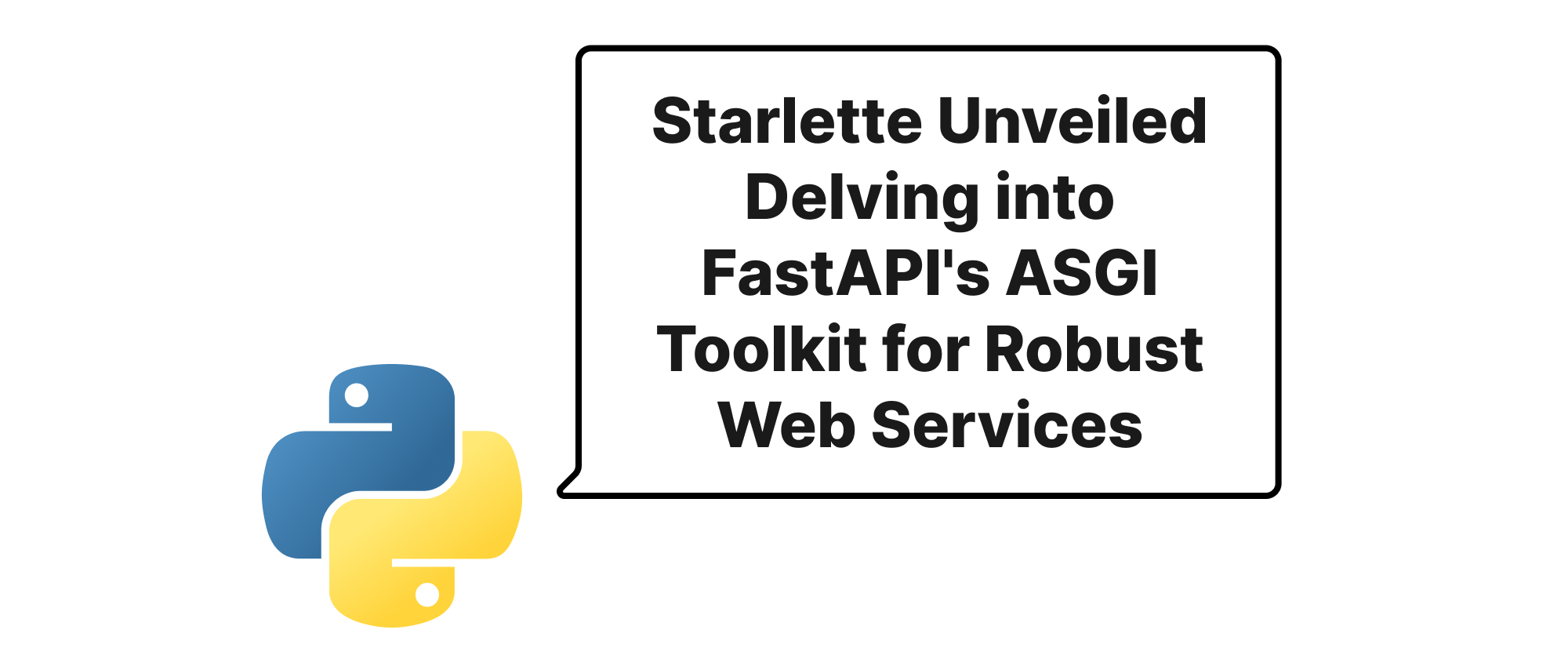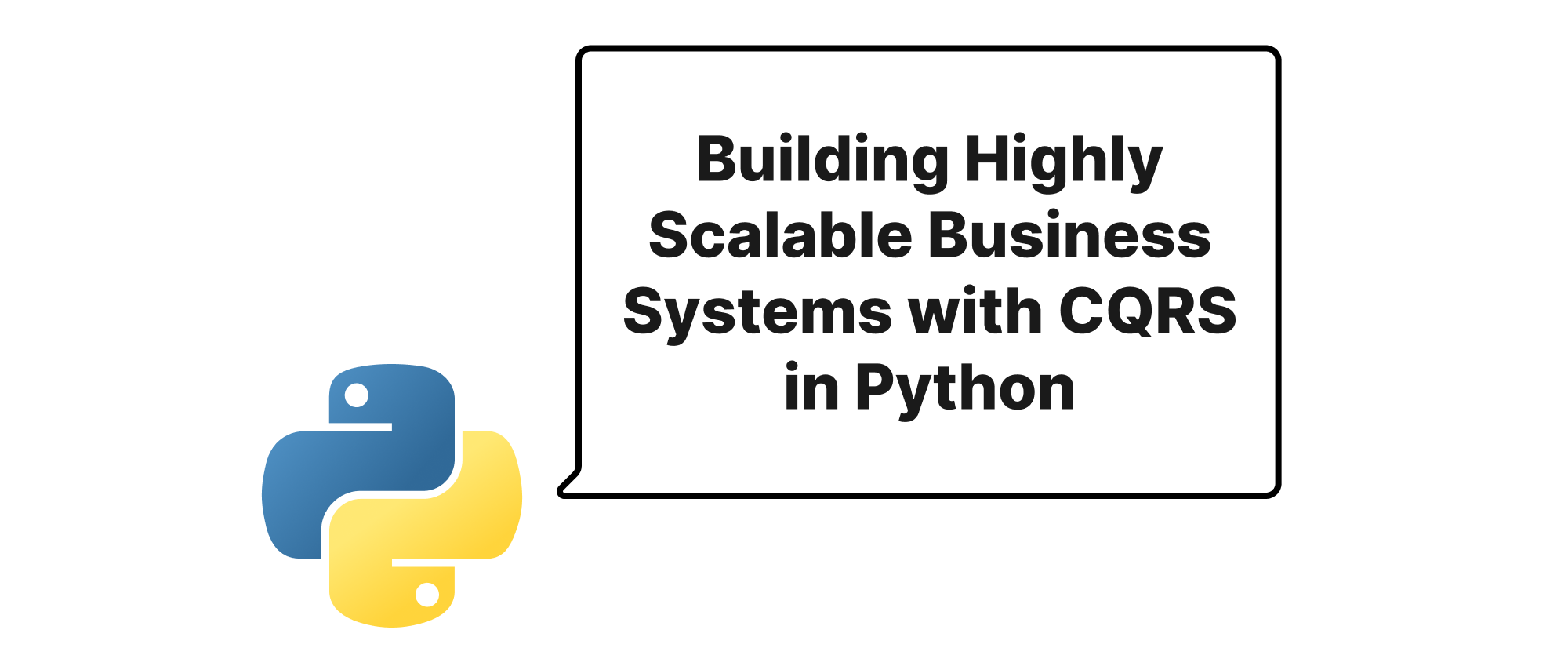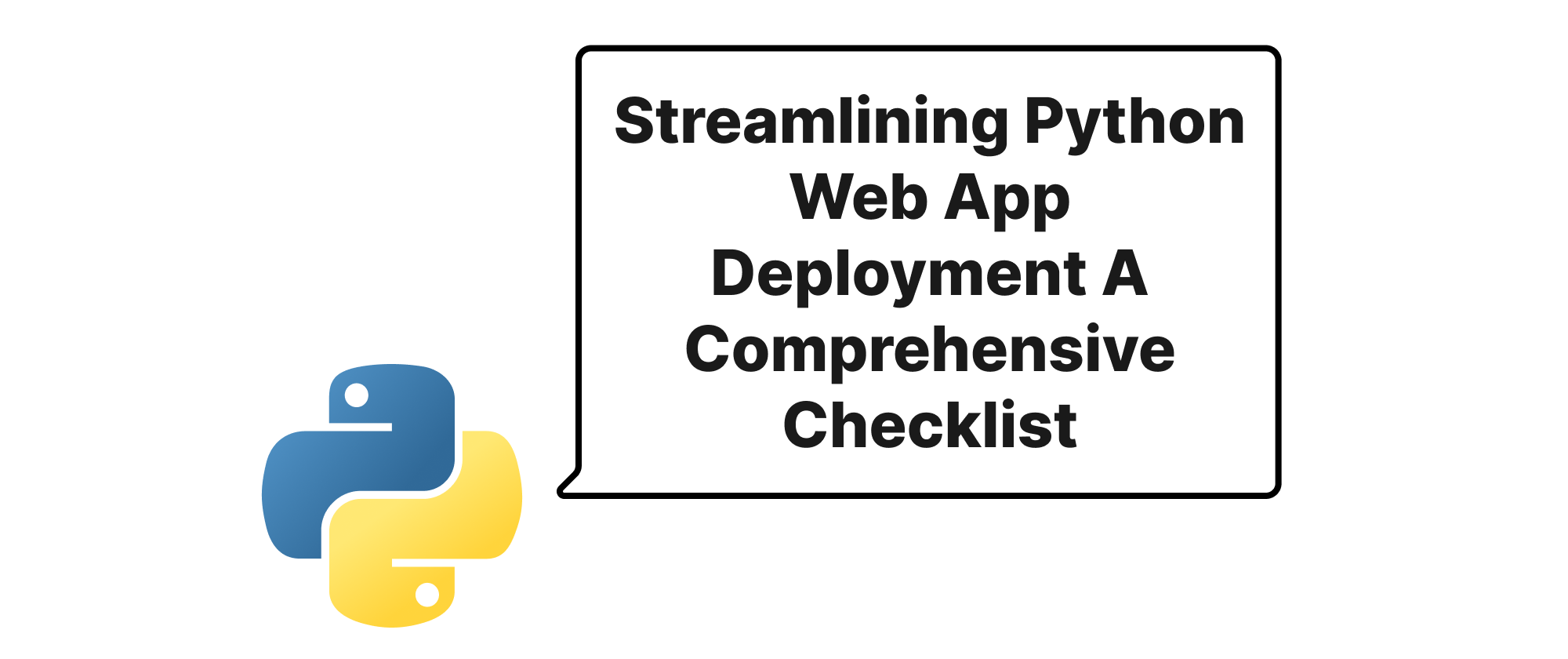Starlette Unveiled Delving into FastAPI's ASGI Toolkit for Robust Web Services
Wenhao Wang
Dev Intern · Leapcell

Starlette Unveiled: Delving into FastAPI's ASGI Toolkit for Robust Web Services
In the rapidly evolving landscape of web development, performance and scalability are paramount. Python, traditionally lauded for its versatility, has seen a resurgence in high-performance web applications thanks to the advent of Asynchronous Server Gateway Interface (ASGI) and frameworks built upon it. Among these, FastAPI has emerged as a groundbreaking solution, captivating developers with its speed, intuitive API design, and automatic documentation. But beneath FastAPI's elegant facade lies a powerful and flexible toolkit: Starlette. Understanding Starlette is not merely an academic exercise; it's an opportunity to gain deeper insights into how FastAPI achieves its remarkable efficiency and to unlock the potential for building custom, high-performance ASGI applications from the ground up. This article aims to pull back the curtain on Starlette, dissecting its core components – routing, middleware, and responses – and illustrating how these elements combine to form the bedrock of modern Python web services.
The Foundations of Asynchronous Web Development
Before diving into Starlette's specifics, it's crucial to understand a few fundamental concepts that underpin its operation.
ASGI (Asynchronous Server Gateway Interface): ASGI is a spiritual successor to WSGI, designed to handle asynchronous requests. It defines a standard interface between asynchronous Python web servers (like Uvicorn or Hypercorn) and asynchronous Python web applications or frameworks. This interface allows for long-lived connections, WebSockets, and HTTP/2 capabilities, making modern real-time applications a reality.
Starlette: Starlette is a lightweight ASGI framework/toolkit that is explicitly designed for building high-performance asynchronous web services. It provides core functionalities like routing, middleware, and request/response handling, offering a solid foundation for applications that need speed and flexibility without the overhead of a full-stack framework. FastAPI leverages Starlette heavily, adding powerful features like data validation/serialization (Pydantic) and automatic API documentation (OpenAPI/JSON Schema).
Routing: In web development, routing is the process of dispatching an incoming request to the appropriate handler function based on its URL path and HTTP method. Starlette's routing system is designed to be efficient and flexible, allowing developers to define complex URL patterns.
Middleware: Middleware components are functions or classes that process incoming requests before they reach the main application handler and outgoing responses after they leave the handler. They provide a powerful mechanism for adding cross-cutting concerns like authentication, logging, error handling, or CORS policies without cluttering individual route handlers.
Responses: After processing a request, a web application needs to send a response back to the client. Starlette offers a variety of response classes (e.g., PlainTextResponse, JSONResponse, HTMLResponse, StreamingResponse, FileResponse) to handle different content types and scenarios efficiently.
Starlette in Action: Routing, Middleware, and Responses Explained
Starlette's strength lies in its modularity and performance-oriented design. Let's explore its core features with practical examples.
Routing: Guiding Requests to Their Destination
Starlette's routing system is expressive and straightforward. You define routes by associating URL paths and HTTP methods with asynchronous handler functions.
# main.py from starlette.applications import Starlette from starlette.responses import PlainTextResponse, JSONResponse from starlette.routing import Route async def homepage(request): return PlainTextResponse("Hello, world!") async def user_detail(request): user_id = request.path_params['user_id'] return JSONResponse({"message": f"User ID: {user_id}"}) routes = [ Route("/", homepage), Route("/users/{user_id:int}", user_detail), # Path parameter with type annotation ] app = Starlette(routes=routes)
To run this, you would typically use an ASGI server like Uvicorn: uvicorn main:app --reload.
- Accessing
/would return "Hello, world!". - Accessing
/users/123would return{"message": "User ID: 123"}.
Notice how user_id is automatically extracted from the path and available in request.path_params. Starlette also supports regular expressions and custom path converters for more advanced routing needs.
Middleware: Intercepting and Enhancing Requests/Responses
Middleware is a crucial aspect of building robust web applications. Starlette allows you to stack multiple middleware components, which execute in the order they are defined.
Let's implement a simple logging middleware and a CORS middleware.
# main.py (continued) import time from starlette.middleware import Middleware from starlette.middleware.cors import CORSMiddleware from starlette.responses import PlainTextResponse, JSONResponse from starlette.applications import Starlette from starlette.routing import Route async def homepage(request): return PlainTextResponse("Hello, world!") async def user_detail(request): user_id = request.path_params['user_id'] return JSONResponse({"message": f"User ID: {user_id}"}) routes = [ Route("/", homepage), Route("/users/{user_id:int}", user_detail), ] async def custom_logging_middleware(request, call_next): start_time = time.time() response = await call_next(request) process_time = time.time() - start_time response.headers["X-Process-Time"] = str(process_time) print(f"Request: {request.method} {request.url.path} - Processed in {process_time:.4f}s") return response middleware = [ Middleware( CORSMiddleware, allow_origins=["*"], # In a real app, restrict this allow_methods=["*"], allow_headers=["*"], ), Middleware(custom_logging_middleware), ] app = Starlette(routes=routes, middleware=middleware)
Now, when you make a request:
- The
CORSMiddlewarewill add the necessary CORS headers to allow cross-origin requests. - The
custom_logging_middlewarewill log the request method and path, wrap thecall_next(which executes the actual route handler and subsequent middleware), and then log the processing time and add a custom header to the response.
Middleware can be defined globally for the entire application, or specified per route for more granular control.
Responses: Crafting the Output
Starlette offers a rich set of response classes to handle various data formats and scenarios.
# main.py (continued) from starlette.responses import ( PlainTextResponse, JSONResponse, HTMLResponse, RedirectResponse, StreamingResponse, FileResponse ) import io # ... (routes and middleware definitions remain the same) ... async def serve_html(request): content = "<h1>Welcome to Starlette!</h1><p>This is an HTML response.</p>" return HTMLResponse(content) async def serve_file(request): # Imagine a static file "example.txt" in the same directory # For a real application, consider starlette.staticfiles.StaticFiles return FileResponse("example.txt", media_type="text/plain") async def redirect_example(request): return RedirectResponse(url="/") async def stream_data(request): async def generate_bytes(): for i in range(5): yield f"Line {i+1}\n".encode("utf-8") await asyncio.sleep(0.5) # Simulate some work return StreamingResponse(generate_bytes(), media_type="text/plain") routes.extend([ Route("/html", serve_html), Route("/file", serve_file), Route("/redirect", redirect_example), Route("/stream", stream_data), ]) app = Starlette(routes=routes, middleware=middleware)
HTMLResponse: Sends back HTML content.FileResponse: Serves a static file from the file system.RedirectResponse: Issues a 307 (Temporary Redirect) or 308 (Permanent Redirect) response, redirecting the client to another URL.StreamingResponse: Ideal for large files, real-time data feeds, or any scenario where you want to send data in chunks without loading the entire content into memory first. Thegenerate_bytesasync generator yields byte chunks.
Advanced Concepts: Exception Handling and Lifespan Events
Starlette also provides mechanisms for global exception handling and managing application startup/shutdown events.
# main.py (even further continued) import asyncio from starlette.exceptions import HTTPException from starlette.responses import JSONResponse # ... (previous imports, routes, middleware) ... async def custom_exception_handler(request, exc): if isinstance(exc, HTTPException): return JSONResponse({"detail": exc.detail}, status_code=exc.status_code) return JSONResponse({"detail": "An unexpected error occurred"}, status_code=500) async def startup_event(): print("Application is starting up...") # Perform database connections, load models, etc. async def shutdown_event(): print("Application is shutting down...") # Close database connections, release resources exception_handlers = { HTTPException: custom_exception_handler, 500: custom_exception_handler, # Catch generic 500 errors } app = Starlette( routes=routes, middleware=middleware, exception_handlers=exception_handlers, on_startup=[startup_event], on_shutdown=[shutdown_event] ) # Example route that raises an exception async def trigger_error(request): raise HTTPException(status_code=400, detail="This is a bad request!") routes.append(Route("/error", trigger_error))
exception_handlers: Allows you to define custom handlers for specific exception types or HTTP status codes. When/erroris accessed,custom_exception_handlerwill format theHTTPExceptionas a JSON response.on_startupandon_shutdown: These lists take asynchronous functions that will be executed when the ASGI server starts and stops the application, respectively. This is perfect for setting up and tearing down resources like database connections.
The Starlette Advantage: Why it Powers FastAPI
FastAPI’s reliance on Starlette is no accident. Starlette provides:
- Asynchronous-First Design: Built from the ground up for
async/await, ensuring optimal performance for I/O-bound operations. - Minimalist Core: It focuses on essential web components, offering flexibility without opinionated structures, allowing FastAPI to integrate its own powerful features (like Pydantic).
- Performance: Its efficient design translates directly into high throughput and low latency, crucial for modern APIs.
- Extensibility: The middleware and routing systems are highly extensible, making it easy to integrate third-party libraries or custom logic.
- Pythonic API: Starlette embraces Python idioms, making it a joy to work with for Python developers.
While FastAPI abstracts away much of Starlette's direct usage, understanding Starlette empowers developers to leverage its features for more complex or customized scenarios, debug issues more effectively, or even build their own lightweight ASGI applications if FastAPI's overhead isn't needed.
Concluding Thoughts
Starlette stands as a testament to Python's evolving capabilities in high-performance web development. By providing a clean, asynchronous-first foundation for routing, middleware, and response handling, it has not only propelled FastAPI to the forefront but also offers a robust toolkit for anyone building scalable ASGI applications. Its minimalist yet powerful design ensures efficiency while offering the flexibility needed to tackle diverse web service challenges. For anyone seeking to master modern Python web development, a deep dive into Starlette's elegant architecture is an invaluable journey. It truly is the high-octane engine quietly underpinning many of today's most performant Python APIs.


